22 January 2024
As technology advances, desktop computers are becoming more sophisticated and powerful, which inevitably entails greater heat production. In this context, fans play a key role in the cooling process. Their careful selection is not only a question of maintaining optimum performance and longevity of individual components, but also a question of user comfort. Excessive temperatures can result in components overheating, which in turn leads to failures or even irreparable damage to the hardware. Choosing the right fan is a task that requires an understanding of several key aspects that are essential to making an informed decision. In this article, we will take a closer look at what criteria you need to consider in order to choose the optimal cooling solution for your computer system.
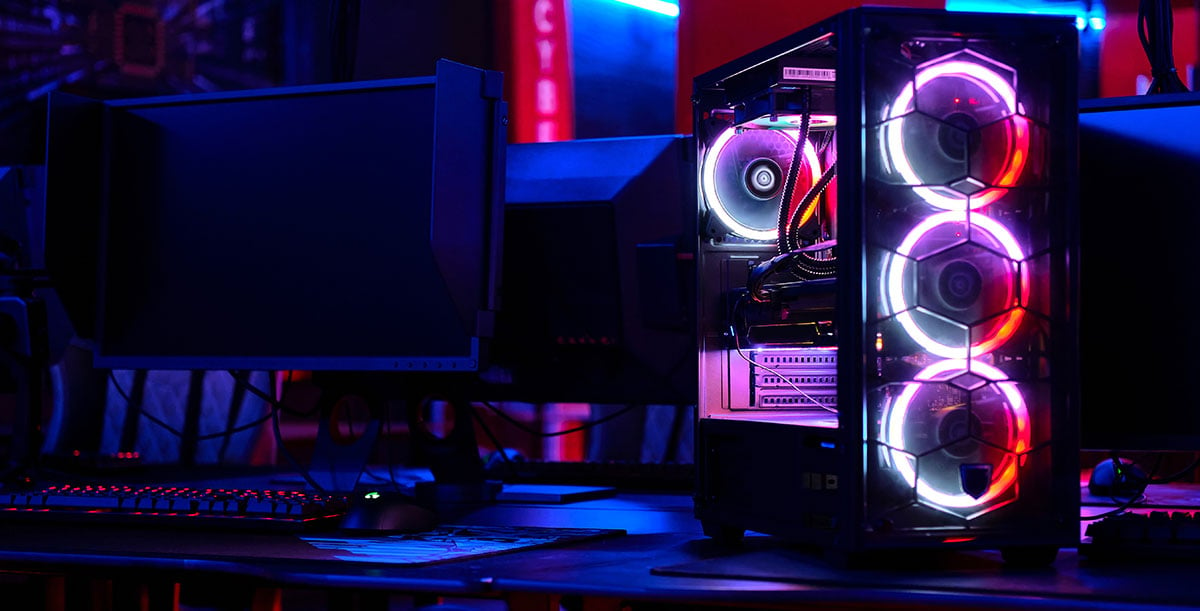
Types of computer fans - what are the differences?
A fan-based cooling system is known as active cooling. Air circulation is generated by rotating fan blades. The introduction of this type of ventilation is usually carried out through installation in the case (which allows for efficient heat removal from the entire system) or directly at specific components. Fans vary in size, number of propeller revolutions per minute, type of bearings, quality of materials, speed control capability and lighting or lack thereof.
Additional cooling components such as external fans are also available on the market. There are also cooling pads to help keep mobile equipment at the right temperature. They can prove particularly useful when using a laptop on soft surfaces, such as a bed, where it is more exposed to possible overheating.
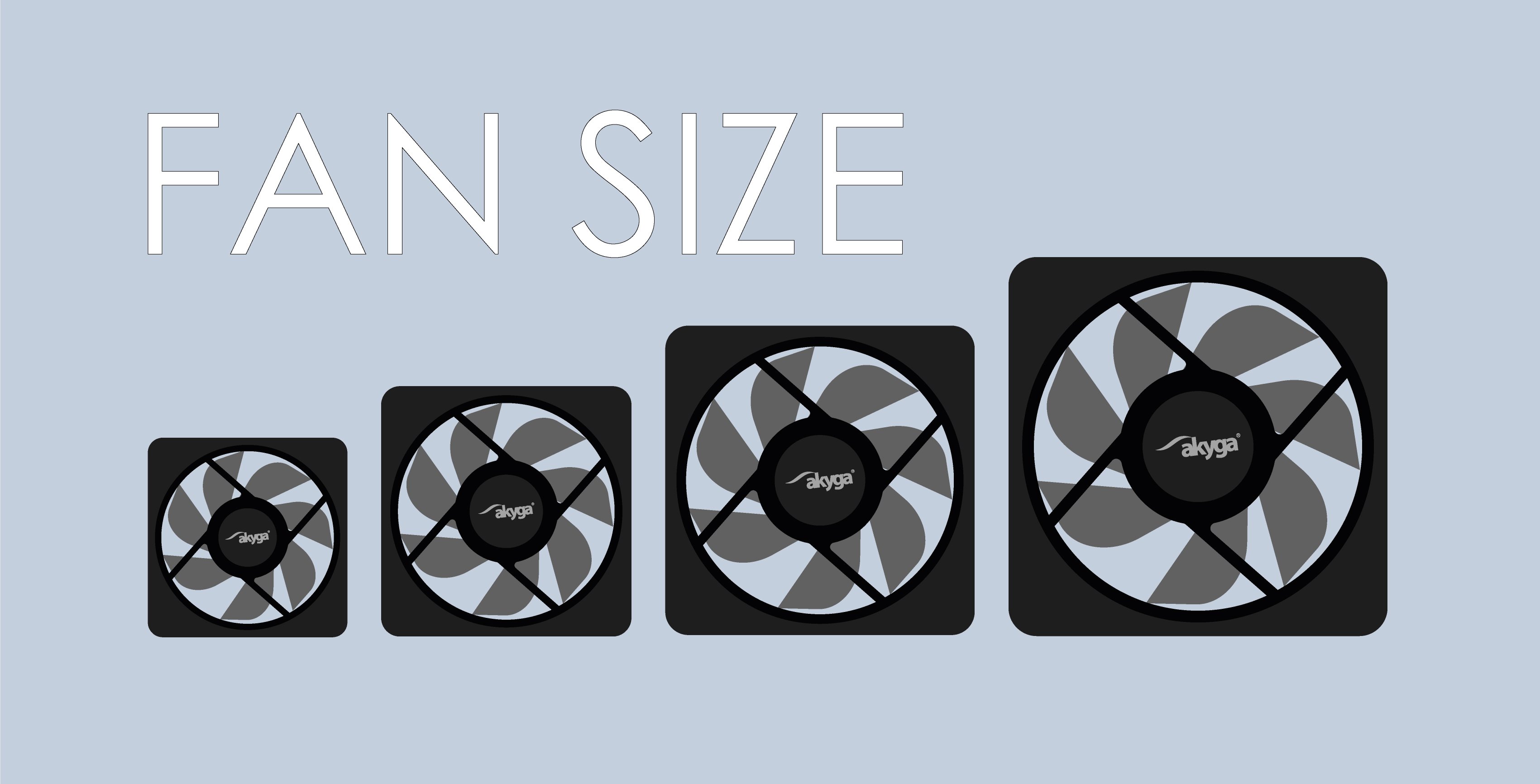
Computer fan sizes - why does diameter matter?
Fans are a key component of a desktop computer. They affect both its performance and the durability of the installed components. It is therefore important to pay particular attention to the fan diameter when selecting a model for your system. The diameter determines the size of the impeller, and its proper selection can significantly affect cooling efficiency.
Replacing an old fan with a new one seems relatively simple. Simply choose a model of exactly the same size as the previous one. This will avoid potential problems during assembly.
The situation is different when assembling a new desktop computer. Then you have to choose the right fan size yourself. The computer fan should be adapted to the size of the case and the locations in the case that are provided for the installation of fans. Cases often have the option of mounting different fan sizes. Choosing a larger size can potentially improve ventilation and heat dissipation efficiency, but whether a larger diameter always means better cooling will be considered later in this article.
It is also important to match fan performance to the type of application. A larger diameter may be more effective for intensive gaming or demanding graphics tasks. Choosing the right fan size is not only a matter of aesthetics, but more importantly a key element in ensuring optimal cooling conditions for your computer hardware.

What is the best fan size for a desktop computer?
The most popular fan sizes are 120 mm and 140 mm. However, we can also find fans on the market with smaller diameters such as 20 mm, 40 mm or 80 mm and larger diameters such as 200 mm. Fans with smaller diameters are often used in computer cases where space is limited. Larger ones, on the other hand, often offer better ventilation at lower speeds. When choosing a fan, it is also worth paying attention to compatibility with the case and motherboard.
Smaller diameter fans - ideal for compact PCs
Smaller diameter fans - usually 20mm, 40mm and 80mm - are ideal for compact PCs. Their small size allows for efficient cooling in limited space, which is crucial with the miniaturisation of electronic devices. Thanks to the use of advanced technologies and materials, these small yet efficient devices are able to maintain optimal temperatures during intensive use. Therefore, when choosing a fan for a compact system, it is worth looking at models with small diameters. They provide a compromise between size and cooling performance.
Medium fans - standard cooling for most units
Fans with diameters of 120 mm and 140 mm are among the most commonly used fans in desktop PCs. They offer an excellent balance between cooling performance and noise level.
Large-diameter fans - for demanding users
Large-diameter fans - usually 180 mm and 200 mm - are an essential component for more demanding users and overclocking enthusiasts. Their size allows efficient cooling under high component loads during advanced tasks or extreme overclocking of components. Thanks to the increased airflow, such a solution effectively reduces temperatures. It is therefore worth investing in an appropriately sized fan to enjoy the full performance of your computer and minimise the risk of overheating.
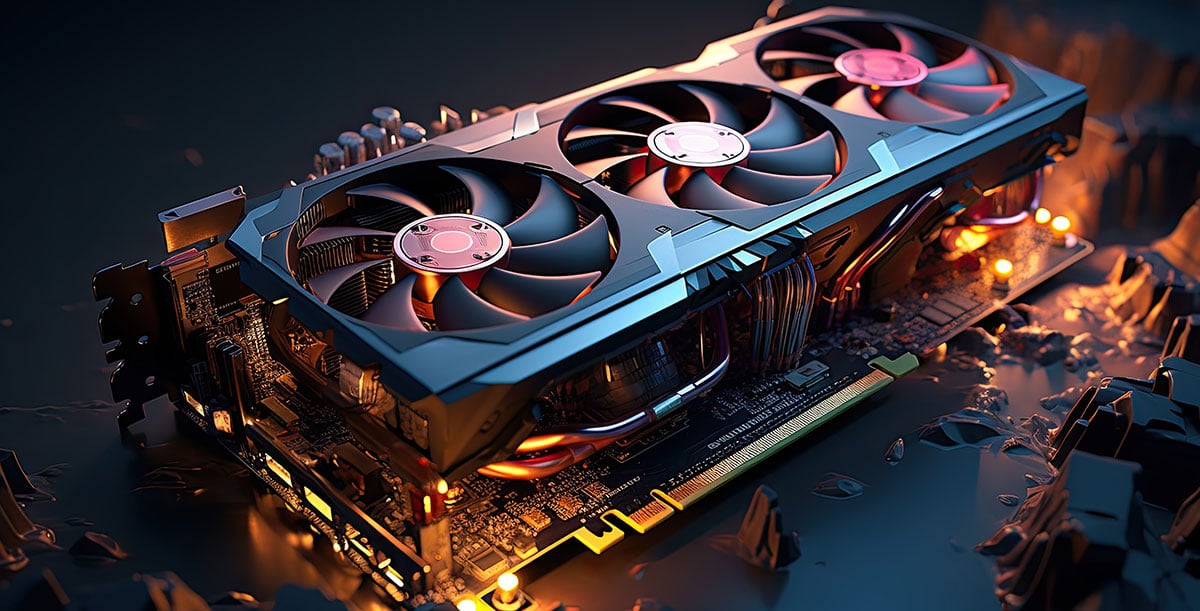
Does a larger fan diameter always mean better cooling?
A common question asked when buying a fan is whether a larger fan diameter automatically translates into better cooling performance. Contrary to what you may think, the answer is not clear-cut, and this decision should be made after considering a number of other factors. Yes, fans with a larger diameter have the potential to move more air and cool a larger area of equipment, which could theoretically suggest better performance. However, the speed of the fan, the shape of the blades and the technologies used in the design are also important aspects. The optimal choice of fan therefore depends on the specific application and the conditions in which it will operate.

Fans and the noise level of a computer
When choosing a fan for a computer, it is important to find the golden mean between quiet operation and effective cooling. Under standard computer load, running fans usually maintain a low noise level. However, the situation changes when the processor reaches higher revolutions. This generates a considerable amount of heat, which needs to be dissipated effectively outside the case. In such cases, the fan propellers start to rotate faster and a more intensive noise level becomes noticeable.
Parameters such as speed and blade size also affect the noise it generates. Larger fans, although they usually generate less noise with similar cooling performance, take up more space in the case. Smaller fans, on the other hand, although more compact, can be noisier at high speeds. By choosing the right fan diameter, you can construct a cooling system that effectively keeps components cool while minimising noise.
The type of bearings used also has a significant impact on fan noise. Ball bearings are distinguished by their long service life, but they are not among the quietest. To reduce the noise level somewhat, it is better to choose a double-ball version. Plain bearings are much quieter than their ball counterparts. They are also more affordable, but their service life is slightly shorter than ball bearings. The final type is hydraulic bearings. This is a fairly diverse group, but much more expensive compared to the other bearing types. These components are characterised by their durability and quiet operation.
The shape of the fan blades is another factor that affects both the cooling efficiency and the sound level during computer operation. Properly designed blades allow for better ventilation, which results in quieter operation.
The right choice of fan can significantly affect user comfort. For some, the noise of running blades is so bothersome that it makes it impossible to use the computer. In this case, it is worth considering the purchase of an innovative solution that reduces the noise level to a minimum or the use of passive cooling.
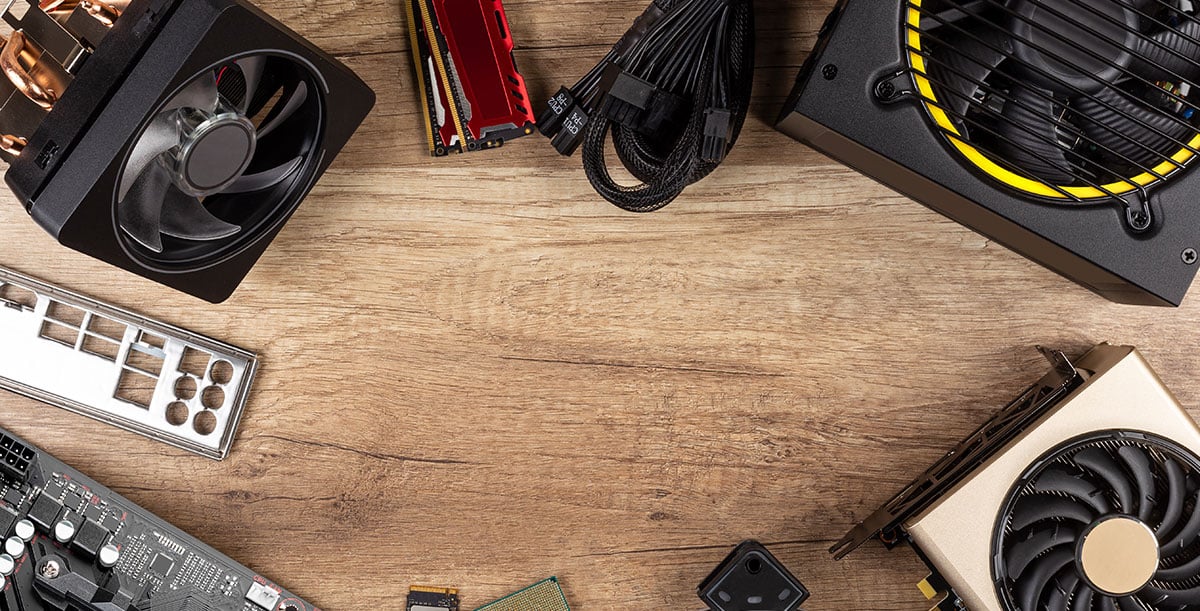
Total computer silence
For the most demanding users - hardware enthusiasts as well as those in need of complete concentration - we have yet another solution in the Akyga brand's range. ATX Fanless power supplies are fanless. They use a passive cooling method. They dissipate heat by means of a heat sink unit. Thus, they enable efficient cooling of computer components without generating noise. They are the ideal option for those looking for a quiet and energy-efficient system.
Read more about passive power supplies in the article The revolution in PC power supply - why choose a silent Fanless power supply?
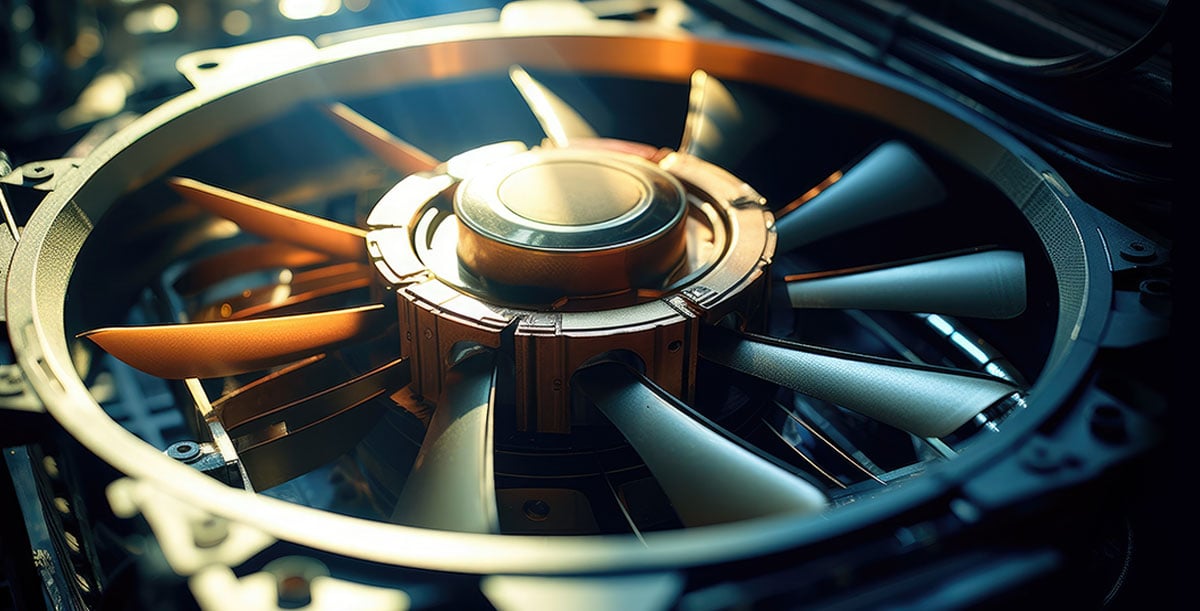
How do I choose a fan for my computer? Other important parameters
- Efficiency
Different fan models offer different levels of cooling performance. If you plan to run your computer intensively, such as gaming or graphics work, it is recommended to choose a fan with a higher airflow capacity.
- Pressure
Another key aspect is to understand the cooling requirements of your specific system. Fans differ in terms of airflow (a.k.a. dynamic pressure) and static pressure. Airflow determines how much air a fan is able to move per unit time, while static pressure is responsible for the fan's ability to overcome resistance.
For water-cooling systems, where there is a need to move air through heat sinks and other obstacles, static pressure is important. Fans designed to generate high static pressure are able to push air through obstacles more efficiently, which is key to keeping coolant temperatures down. In contrast, in traditional ventilation, where air movement is free, optimising the direction of airflow is key. In such an arrangement, the focus should be on creating an efficient airflow through the entire enclosure, which can be achieved by appropriately positioning the intake and exhaust fans.
- Speed control
Some fans are equipped with variable speed control. It allows the cooling to be adapted to the current needs of the system. In low load situations, the speed can be reduced, resulting in lower noise levels. In situations requiring more cooling power, the speed of the fans can be increased.
- Aesthetic qualities
The computer fan plays a key role in personalising the appearance of the computer. By using an RGB or LED fan, the visual effect can be increased with a negligible impact on energy consumption. The ability to customise the lighting effects, colour and synchronisation with other components allows users to create a unique and coherent look for the entire system. However, it should be remembered that aesthetics should not become more important than cooling efficiency.
- Application
If you are looking to cool specific components, for example for a power supply, check their requirements. The technical documentation should contain relevant information on the optimal fan size. Some models may be more suitable for specific applications.
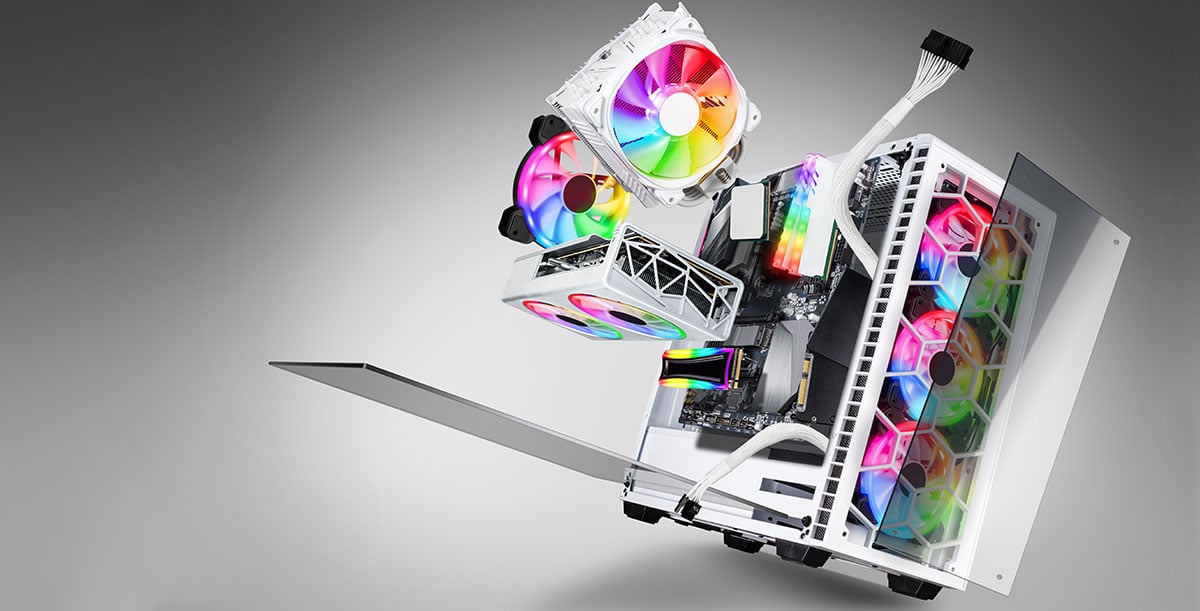
What should I pay attention to when installing a computer fan?
When installing a computer fan, it is crucial to pay attention to the direction of airflow. Fans are designed so that air flows through them in a specific direction. Fans mounted at the front of the case should draw cool air inwards, while those placed at the rear or top should exhaust warm air outwards. Incorrectly positioned fans can lead to ineffective cooling and increased temperatures inside the case.
The fan installation procedure is simply a matter of screwing in a few screws and connecting the cables. The cables should be connected according to the diagram below:
- red - voltage,
- black - ground,
- yellow - tachometer,
- blue - PWM.
Fans with 2-, 3- or 4-pin plugs are available on the market, where 2 pins are characteristic of simpler models and 4 pins denote fans with PWM (Pulse Width Modulation) function. It allows precise speed control. It is worth noting that there are fans with different standards, so follow the installation instructions provided by the manufacturer.
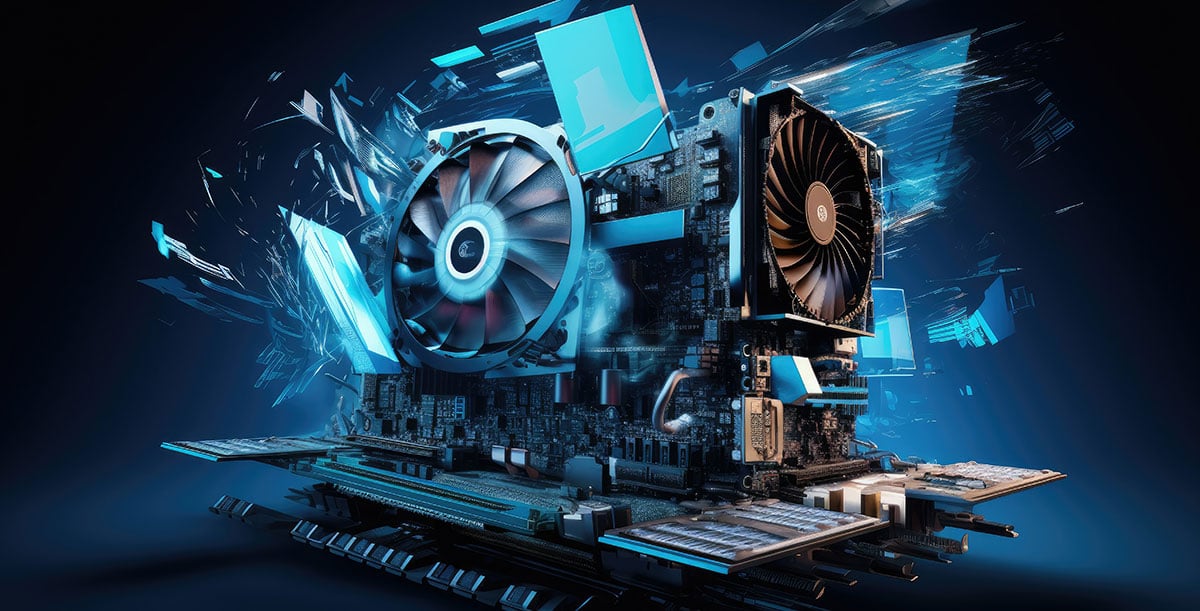
Choosing the right fan size for your computer case - Akyga guide
Choosing the right size computer fan is a crucial step in looking after the stability and performance of your system. Carefully consider the requirements of your machine before you make your purchase. With Akyga's wide range of brands, you are sure to find the perfect solution to suit your needs. Remember that proper cooling is an investment in the long life and reliability of your hardware. The correctly selected fan will help to maintain the right temperatures and improve the performance of your electronic system. Create optimal working conditions for your computer and choose an Akyga fan!
If you are still not sure which fan will be best for your computer, please contact our specialists.
